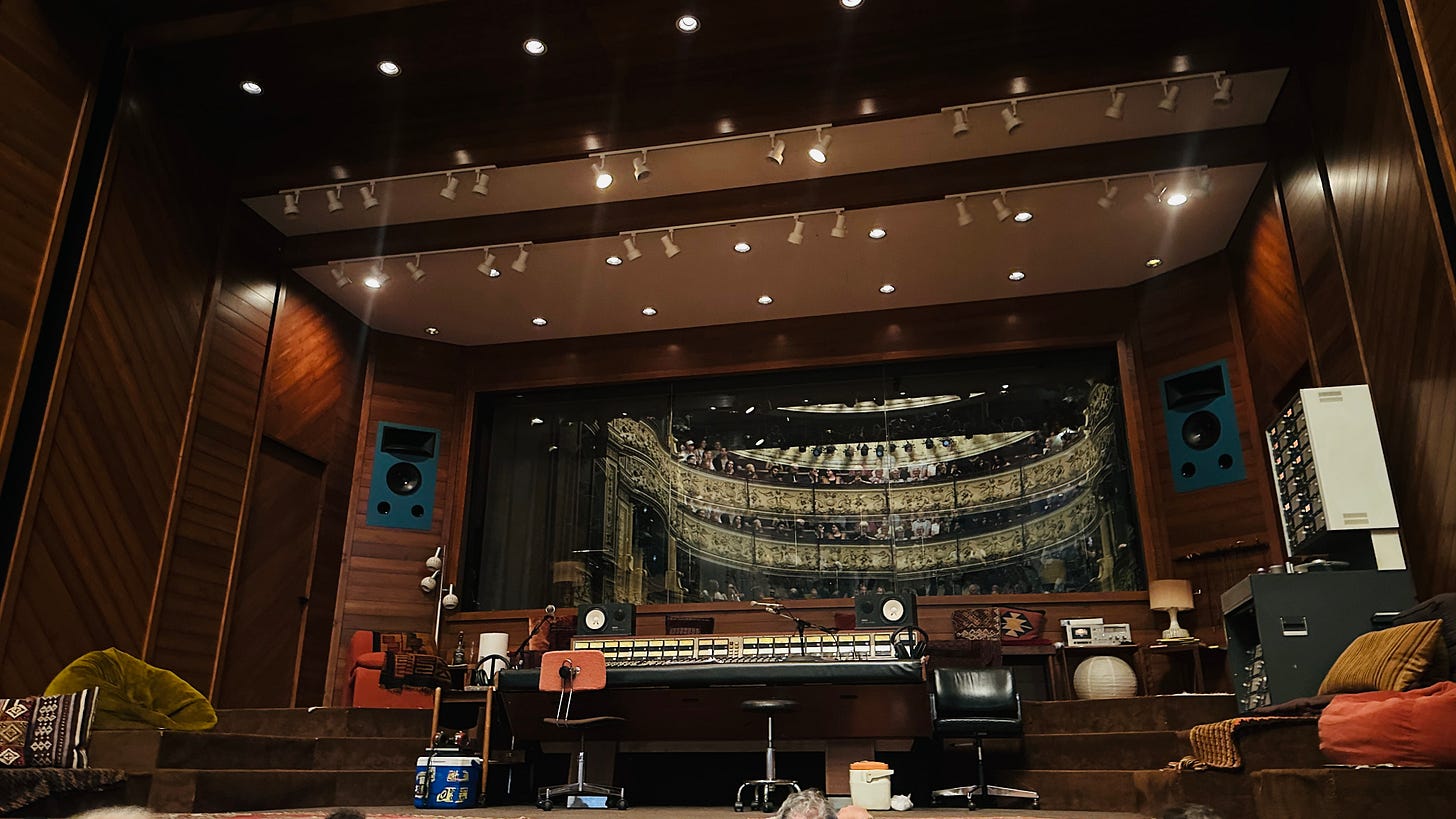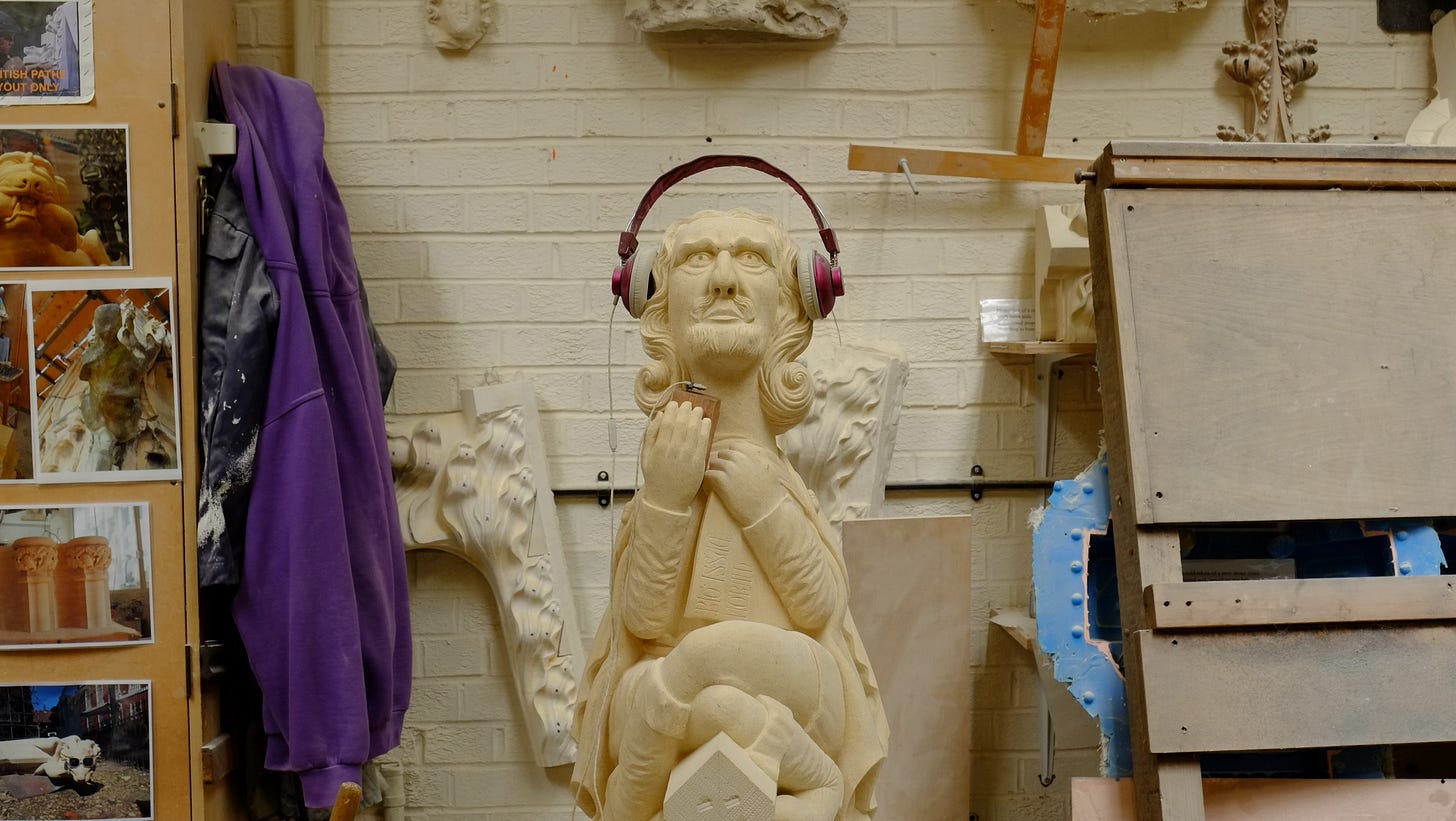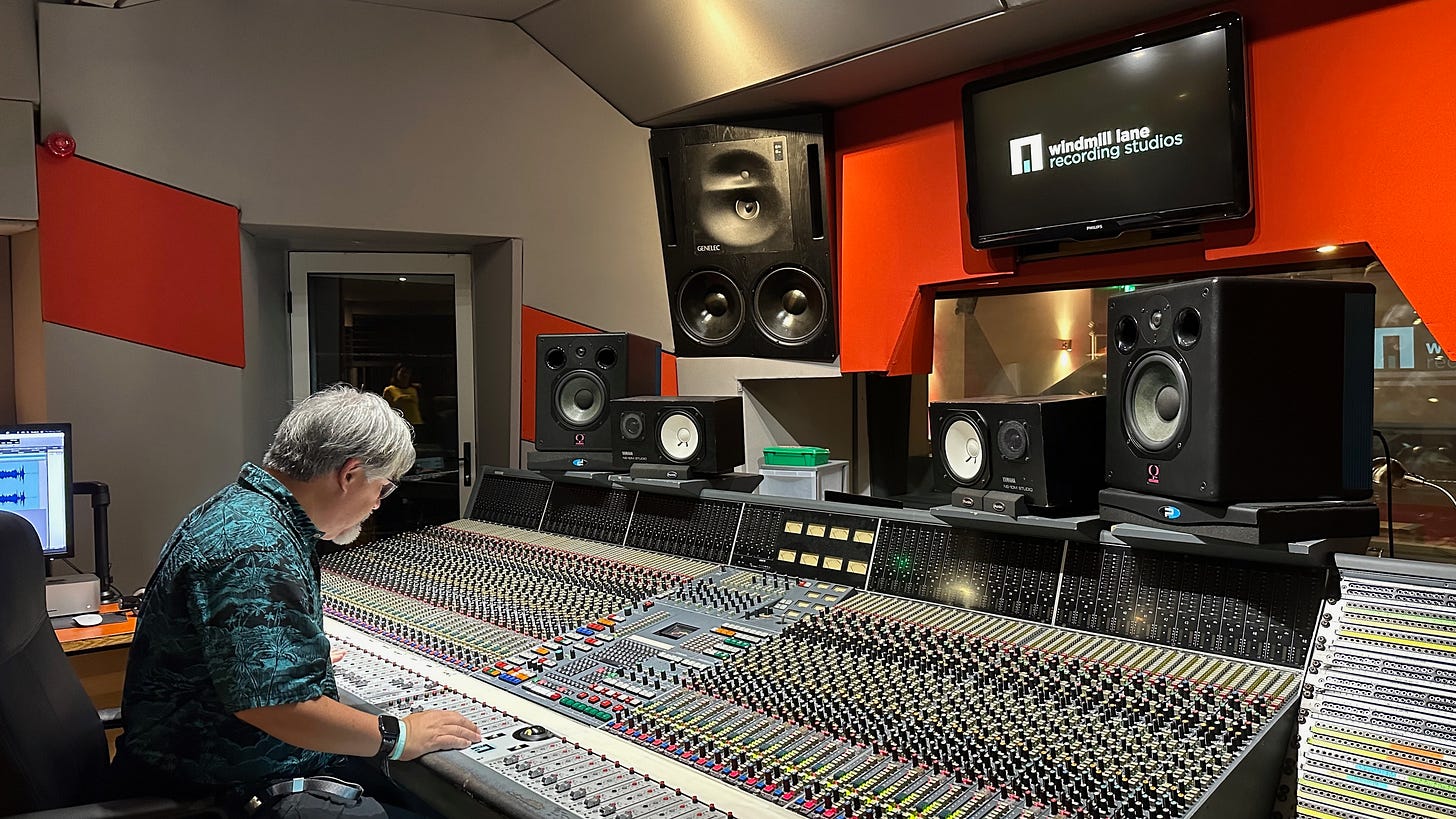Embodied cognition in music: Recording Junior Kimbrough
Today I was listening to Mississippi blues guitarist Junior Kimbrough, one of the great hill country blues musicians. He’s one of those figures who was well-known within his world, but (until late in life) virtually unknown outside. Born in 1930s, Kimbrough recorded a few singles between the 1960s and and 1980s, but spent most of his career playing in house parties, barbecues, and fish fries. Locally he was a legend: the parties were so popular, they evolved into a juke joint, and when he was “discovered” in the 1990s— when he was in his 60s— Junior’s Place became a destination for figures as notable as U2 and the Rolling Stones.
He recorded several albums for a small Oxford-based label called Fat Possum, including Most Things Haven’t Worked Out, which features the amazing song “I’m in Love:”
One of the interesting things about his recording career is that he made a few records in the studio, but most of his work— including tracks on Most Things Haven’t Worked Out— were cut at his own juke joint near Chulahoma, Mississippi. It’s not that he couldn’t work in a studio, and by the 1990s he’d performed at events organized by the Lincoln Center. Nor was the choice to record in a live venue an homage to Alan Lomax and David Evans and other ethnomusicologists; Fat Possum’s founders were loudly contemptuous of academic approaches to blues. Rather, it’s another illustration of how music is embodied and social: it’s more closely tied to places, and to social circles, than we usually imagine.
For most of us today, music is not connected to a specific place or event: it’s streamed to our ears after being created in studios. Since the Walkman, high-quality music has become portable, and listeners choose the place in which performances happen.
On the creation side, those of us who’ve grown up with rock music think of creativity as something that happens in the studio, where groups may spend years perfecting songs. When I was in London this summer I saw Stereophonic, which is a thinly-veiled retelling of Fleetwood Mac’s recording of Rumors, and relies on the audience knowing that recording an album can be an epic experience.
In this world, seeing a band live is cool, but most of the time the studio recording is the “real” performance. There are still exceptions, of course: seeing Alison Kraus and Robert Plant perform “The Battle of Evermore” is one of the high points of my life (no exaggeration).
Even live albums are often documents of a performance in a temporary, self-enclosed world constructed to bring together band and audience, separate from everyday experience and the world outside the venue. You can see the Eagles in San Francisco or Seattle or Miami, and it’s fundamentally the same show. The tour is a hermetically-sealed, placeless space, beautifully parodied in This is Spinal Tap:
This is not what music was like for Junior Kimbrough. For him, music was a local, rooted, community affair. His juke joints grew out of the house parties he threw in the 1980s (sometimes to pay rent); the first one literally took over his house, and he moved to a second property to live. Photographer Bill Steber, who photographed Junior’s Place for several years, described Junior’s Place as a “wonderful little shack out in the middle of nowhere all covered… [with] this amazing folk art.”
The acoustics of the space influenced the music. The floor at Junior’s was concrete, and the room was relatively small and very live— a space that lent it self to a style that was “frequently simple and repetitive, but at its most compelling is profoundly powerful and hypnotic in its starkness,” Michael Dixon writes in Blues Access. (Fat Possum’s office and studio was in a building that had previously been Jimmy’s Auto Care.)
As David Byrne argues, music adapts to the spaces and social contexts where it’s performed: form follows venue. Sustained lines bloom and linger in the large spaces of medieval cathedrals (think of Gregorian chant or Thomas Tallis); bands write mid‑tempo anthems with simple hooks to play in arenas (REO Speedwagon’s High Infidelity was an entire album aimed at this space); and the Talking Head’s own sound evolved in CBGB, where tight, punchy arrangements and driving rhythms cut through.
Musicians don’t just pour inner feelings into fixed forms, or create music that approximates a Platonic ideal—what gets written and how it sounds is shaped by the environment musicians work in, and architecture, acoustics, audience behavior, and technology all contribute to the evolution of musical styles.
It wasn’t just a physical space, of course; it was a living place. The main shows at Junior’s Place happened on Sunday nights after church. Bill Steber recalls that when Junior and his band got going,
sometimes the song would go on for 20 to 25 minutes 30 minutes and everybody [was] locked into this this trance of bodies moving and sweat and humidity and beer and laughter and smoke… it’s the most alive I’ve ever felt in my entire life.
An account of a 1990 visit describes Kimbrough playing off his band, the band and the crowd locked together, feeding off each other:
As he begins to play, he moves his head as if he is receiving radio transmissions from deep space. He says that his songs come to him in his dreams, and listening to him play them, you can believe it. The bassist and drummer tighten up behind him, so that everybody can dance. Over their muscular, repetitive rhythm, Junior's electric guitar floats and bounces, moving at about half the speed of his rhythm section, but guiding it through his songs just the same.
His solos almost always use the same groups of notes, but they never cease to beguile the dancers. He watches them move, then turns to watch his bass player, his drummer, then back to the bass player again.
Other accounts of Junior’s Place paint a similar picture of a dense sensorium of dancers, cigarette haze, and overdriven amps in a repurposed country church— “a sky full of stars, house party in full swing, and the plywood walls of Junior’s juke joint throbbing.”
(That connection between place and community survives in other musical genres. Kate Bush did much of her best work at her home studio, but went to Windmill Lane Studios when recording tracks with Irish musicians. “Irish musicians are like Guinness,” explains Del Palmer, her bass player and engineer; “they don't travel very well.” You can find both everywhere, but you have to go to Dublin for the real thing. Bush wasn’t just hiring individuals to play notes; she was tapping into the unique skill and edge that you get when you work within a world-class community.)
Fellow guitarist R.L. Burnside (another artist Fat Possum recorded) and his family lived just down the road from Junior’s Place. The fact that two of great blues artists lived so close is a clue that Kimbrough’s music was performed within a community of regulars who came to his shows, and the musicians he worked with. His son, blues guitarist Robert Kimbrough, recalled in a 2010 interview that he and other blues musicians’ families “grew up around each other” and “stayed together.” It “means a lot” for those multi-generational collaborations to remain active, and his father “would be really happy” with the “boys carrying on… connecting with the Turners, the [North Mississippi] Allstars, Cody [Dickinson]… and the Burnsides.” (Outsiders testify to the closeness of this world: harmonica player Jason Ricci, who moved from Maine to play blues in Mississippi as a teen, said, “These people either raised me like their son or I grew up alongside them like brothers.”) Playing with extended family was tradition, but also mutual aid: “The only way we going to keep it going, we got to stick together,” Robert said. “And that we gonna do.”
This is why it was hard to record Kimbrough in the studio. His music didn’t live mainly through scores or recordings. It lived (as so much music does) in bodies, rooms, and community. It was a product of embodied and social cognition. It’s a music that is highly interactive, collaborative, and social— and as recording engineers quickly discovered, it was also fragile and ephemeral. “I’ve had experience with country-blues artists in the studio before and having them freeze up because that scene is just not what they’re about,” producer Robert Palmer, who produced two of Kimbrough’s albums, says. The aim is to capture “a whole atmosphere,” adds recording engineer Robbie Norris. “If we try to be too ‘studio,’ we’re going to lose it.” But recording in the wild meant capturing the energy that emerges in the give-and-take between musicians, space, audience, and community— the very things that made it special.




